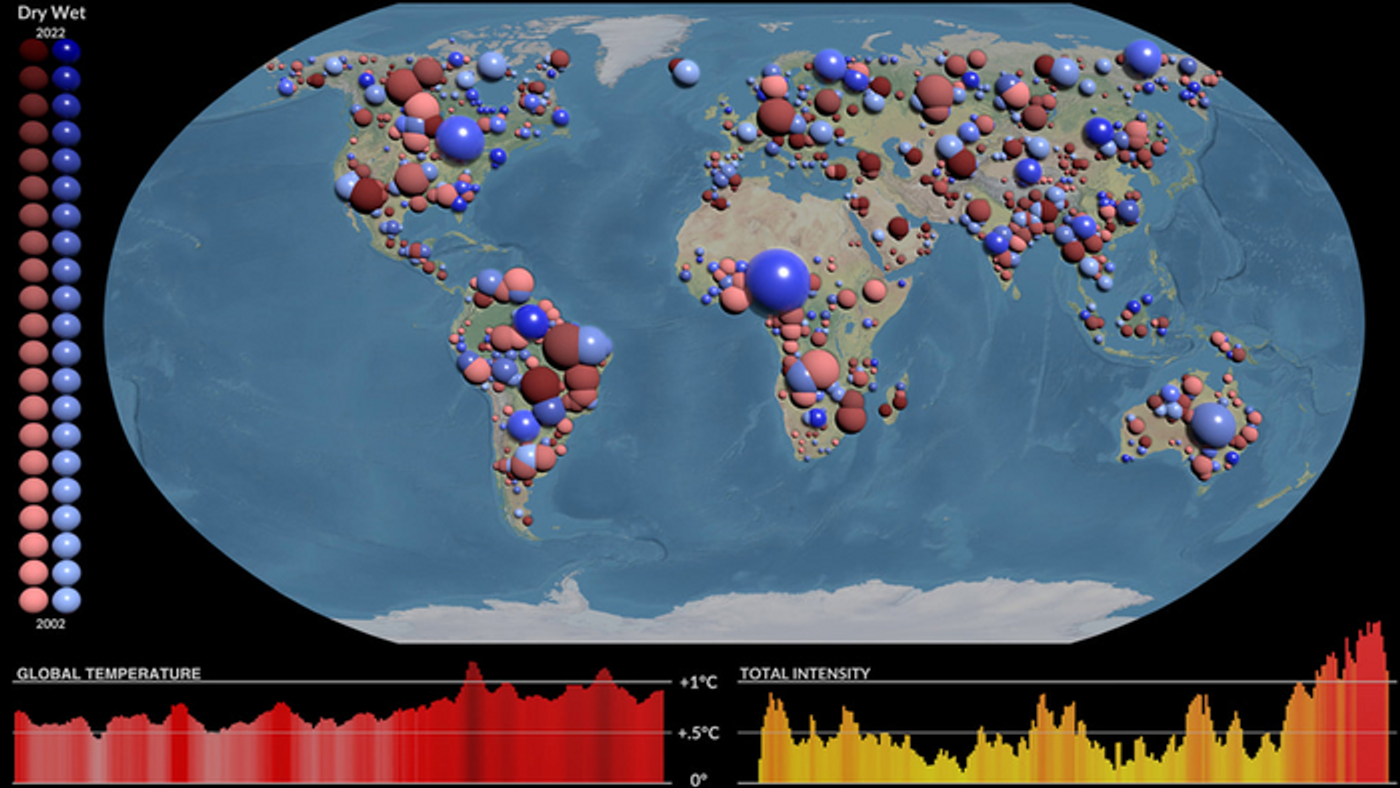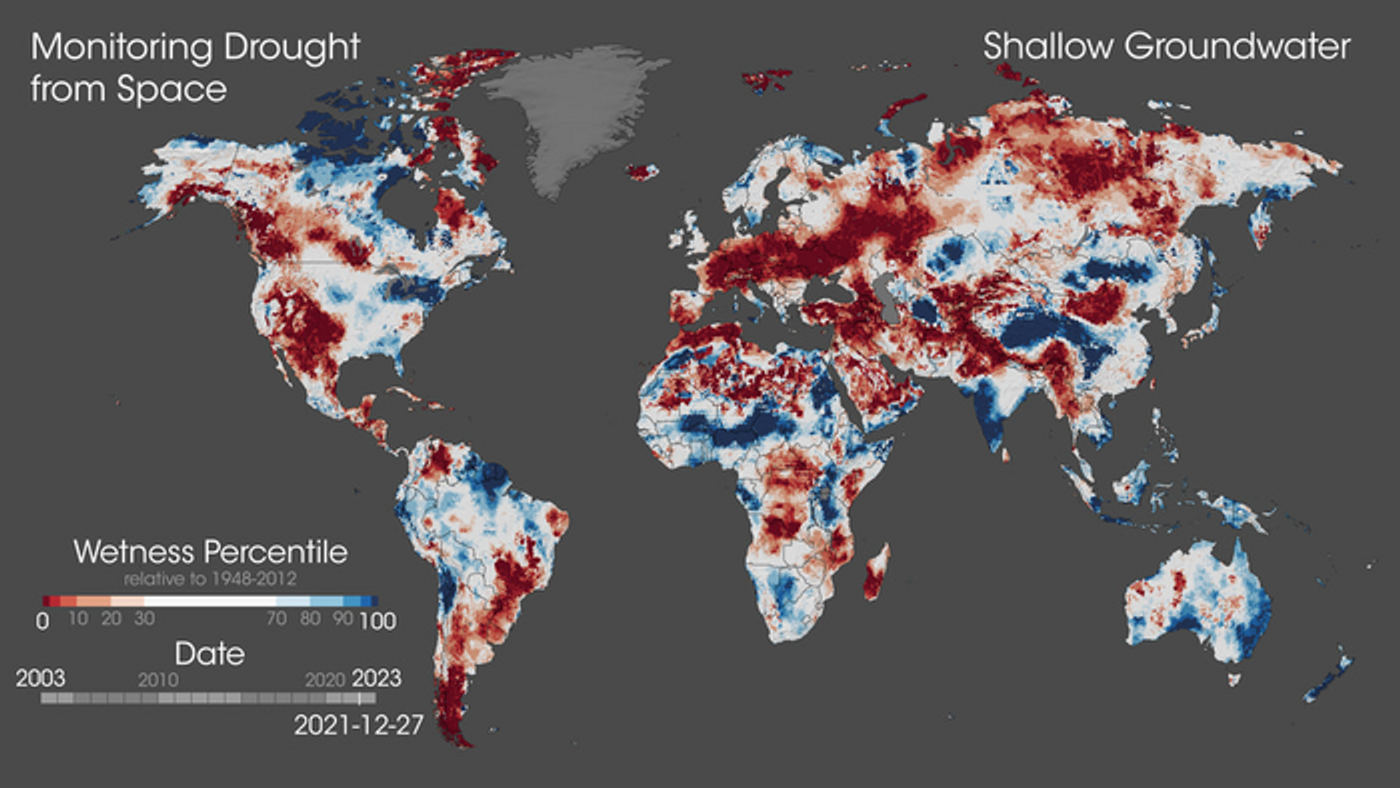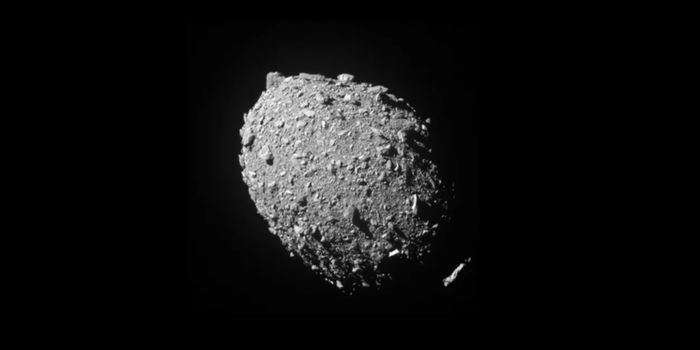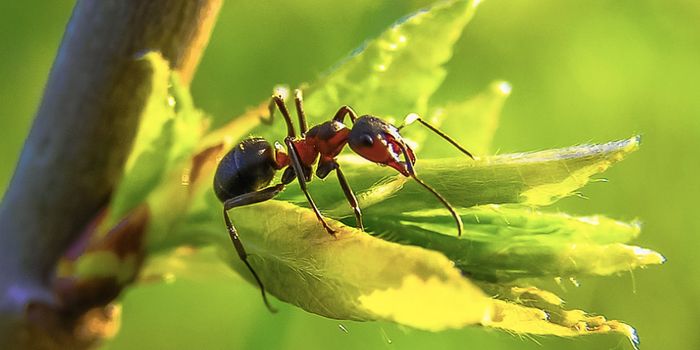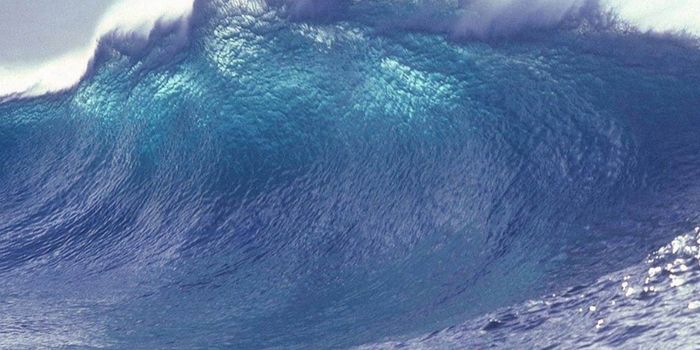Planet Warming Could Lead to More Severe and Recurrent Droughts and Floods
How does climate change impact storms across the globe? This is what a pair of researchers led by NASA hope to answer as they examined how climate change and a warming planet will cause floods and drought to become not only recurrent, but also more severe, as well.
“The idea of climate change can be abstract. A couple of degrees warmer doesn’t sound like much, but water cycle impacts are tangible,” said Dr. Matt Rodell, who is a hydrologist at NASA's Goddard Space Flight Center, and the lead author of the study. “Global warming is going to cause more intense droughts and wet periods, which affects people, the economy, and agriculture around the world. Monitoring hydrological extremes is important for preparing for future events, mitigating their impacts, and adapting.”
Data from the GRACE and GRACE-FO satellites produced this visualization showing water cycle extremes — droughts and pluvials — over a twenty-year period (2002-2021). (Credit: Credit: NASA's Scientific Visualization Studio)
Global shallow groundwater data gathered between 2003 to 2021. (Credit: NASA)
For the study, the researchers examined 1,056 extreme dry and wet storm events during 2002 and 2021 from the NASA/German GRACE and GRACE-FO satellites. Their findings indicate a correlation between the intensity of these storm events and increasing global temperatures. They identified that seven of the nine warmest years on the modern record occurred between 2015 and 2021, with the number of annual storms during that seven-year period reaching four, which is in contrast to the previous 13 years of three storms per year. The data from both satellites detect monthly water storage anomalies across the globe by measuring the Earth’s gravity field, specifically pertaining to snow cover, soils, rivers, aquifers, and lakes.
“It’s like watching the level of the water in your bathtub,” said Dr. Rodell. “You can see how much it rises and falls without knowing the total amount of water in the tub.”
The study identified two extreme storm events that stood out amongst the rest: a pluvial (rainfal event) in central Africa that started in 2019, which has resulted in the water level in Lake Victoria in Kenya to rise by more than one meter, and is still ongoing; and a severe drought in Brazil in 2015-2016, the most extreme dry event over the last 20 years, that resulted in empty reservoirs and water rationing across the country.
“Both events were associated with climate variability, but the Brazilian drought occurred in the warmest year on record (2016), reflecting the impact of global warming,” said Dr. Bailing Li, who is an Assistant Research Scientist at the University of Maryland and a hydrologist at NASA Goddard Space Flight Center. “The recent southwestern U.S. and southern Europe droughts were also some of the most intense events, in part, due to anthropogenic warming. Global warming has had broad and profound impacts on terrestrial water storage, such as reduction of annual snow in high elevations and depletion of groundwater by people when surface waters are scarce. Reflecting these changes, GRACE data provide us a unique perspective of how hydrological extremes have been changing around the world.”
What new discoveries will researchers make about climate change and weather events in the coming years and decades? Only time will tell, and this is why we science!
Sources: Nature Water, NASA
As always, keep doing science & keep looking up!
-
MAY 07, 2024Is It Anti-RNP or Anti-Sm/RNP?
- See More
-
APR 30, 2024Immuno-Oncology Virtual Event Series 2024
-
MAY 07, 20243rd International Biosecurity Virtual Symposium
-
JUN 06, 2024The Future of Scientific Conferencing
- See More
